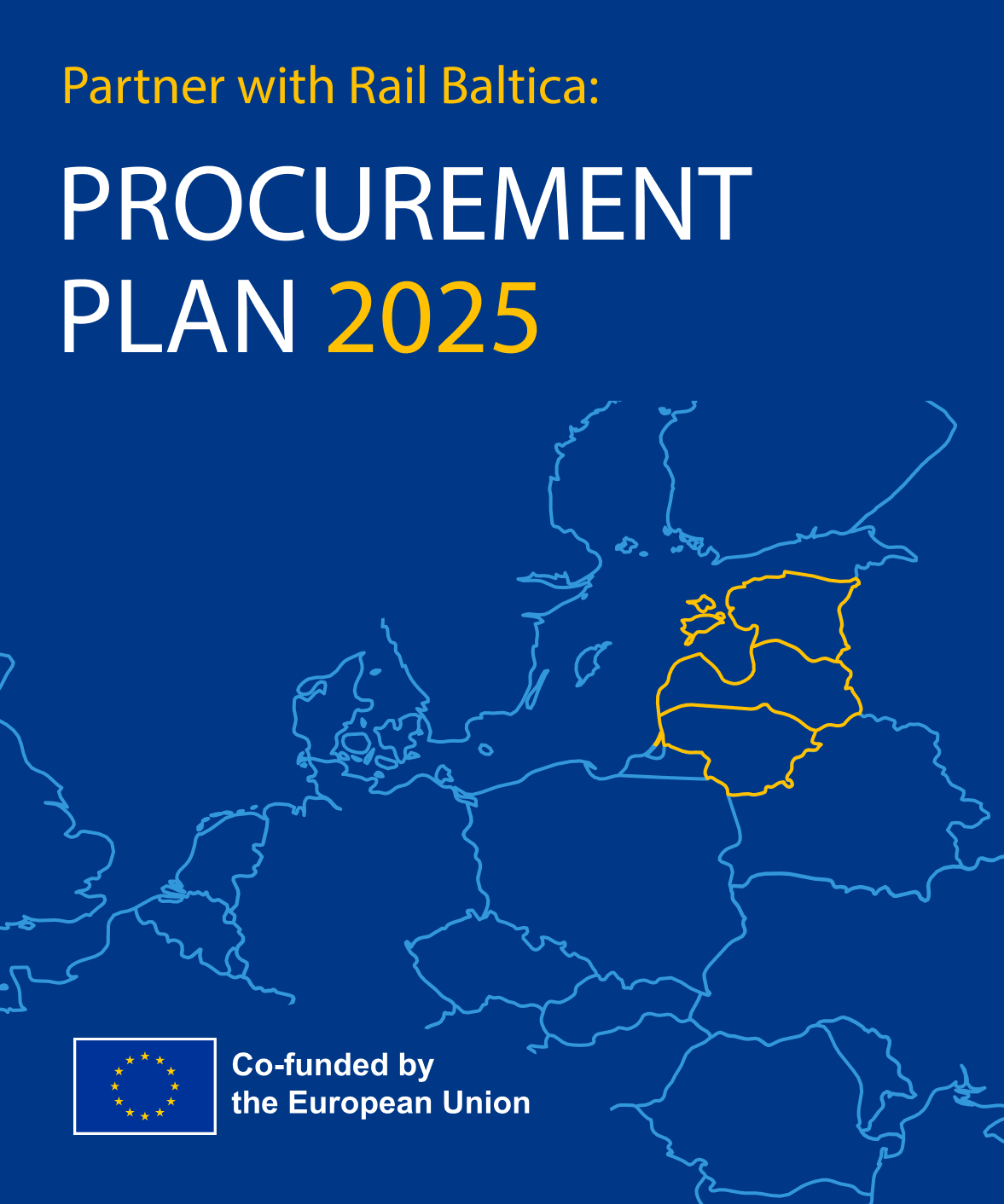To keep potential suppliers and partners informed about procurement priorities for 2025, the Rail Baltica global project is providing a comprehensive overview of ongoing and upcoming procurement activities.

These procurements focus on essential services that drive the advancement of the Rail Baltica project, covering key areas such as superstructure construction, environmental assessments, and design work for specific infrastructure elements and facilities. Several procurements have already been initiated, including the design for Soodevahe-Muuga and the Rail Baltica Muuga freight terminal (Phase II), the design of the Lemme River railway bridge, and the design of eco-ducts at Loigu, Treimani, and Piiri. Additionally, the Pärnu-Kabli Environmental Impact Assessment within the design section has been launched, along with internal audit services for 2025-2026 and other procurements supporting project implementation across the three Baltic States.
Aiga Benfelde, Acting Head of the Procurement Department at RB Rail, highlighted the significance of market engagement in the upcoming procurement process. She emphasized that with a network of over 400 companies, early and proactive engagement with the market is crucial. “Open communication and collaboration with potential partners are key to achieving a successful procurement outcome. Rail Baltica team is committed to engaging with the market well in advance of the formal procurement process, ensuring transparency at every stage. We encourage all qualified and interested businesses to reach out and explore potential opportunities.”
For a more comprehensive look at upcoming procurements, including information on contracting authorities and expected start dates, please visit the official Rail Baltica website: Rail Baltica Procurements.
November 2024 marked a financial milestone for Rail Baltica, with an additional €1.4 billion secured from the Connecting Europe Facility. In total, the project has now secured more than €4 billion, with up to 85% of the eligible costs funded by the CEF and the remaining amount co-financed by the Baltic states. This year, the project aims to further increase this funding by applying for an additional EU financing call of more than €300 million. Meanwhile, alternative financing options, including public-private partnerships, are actively being explored.
